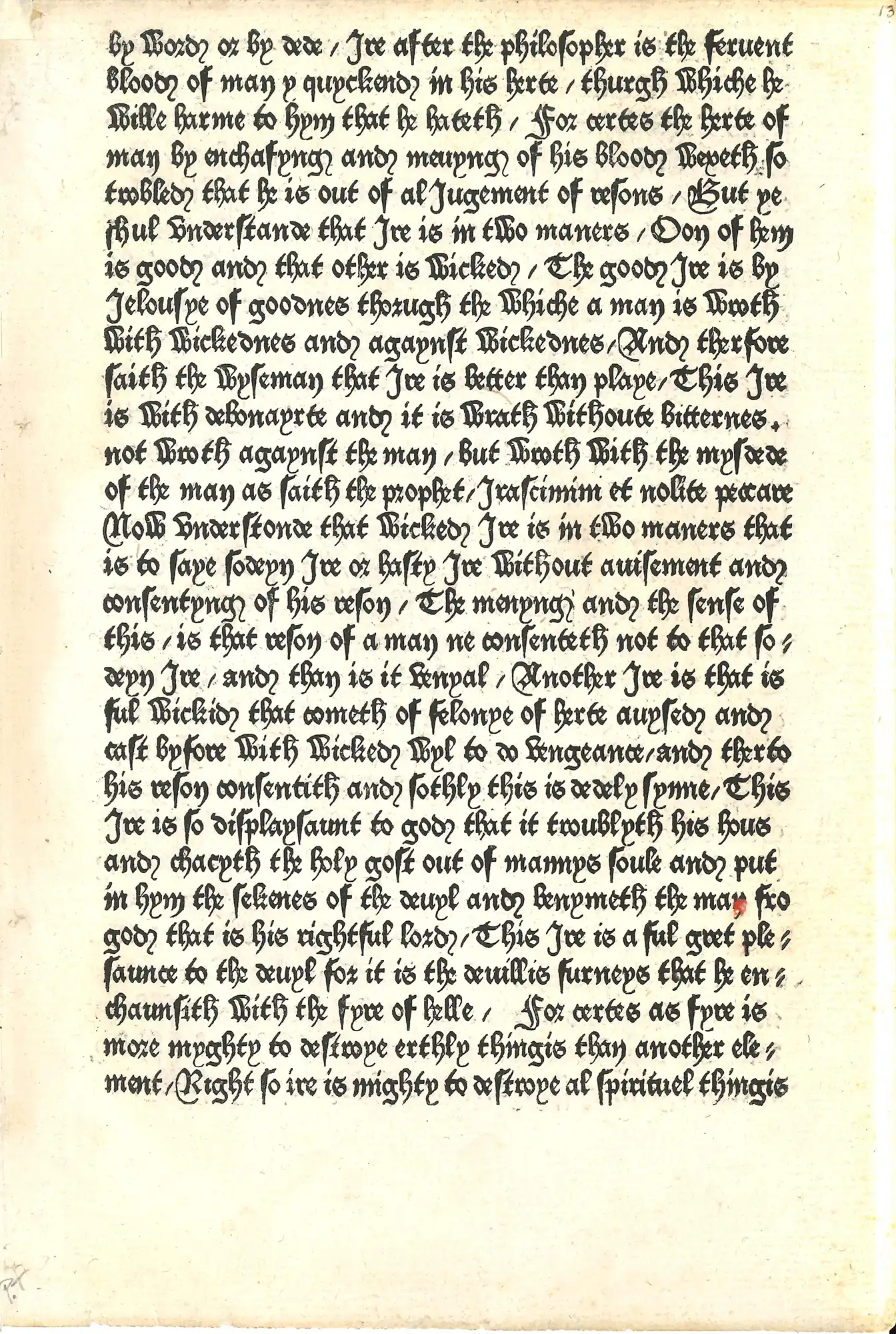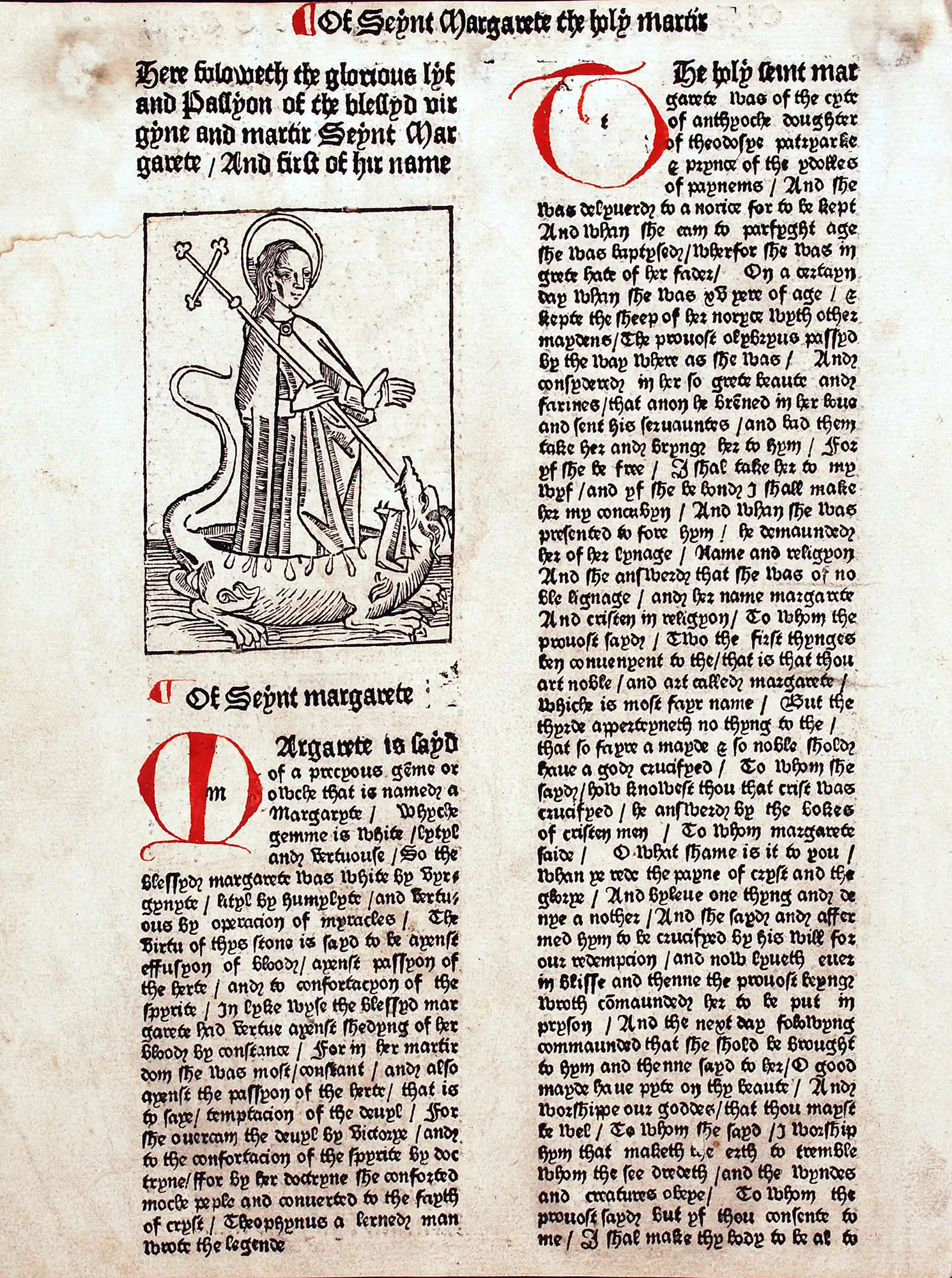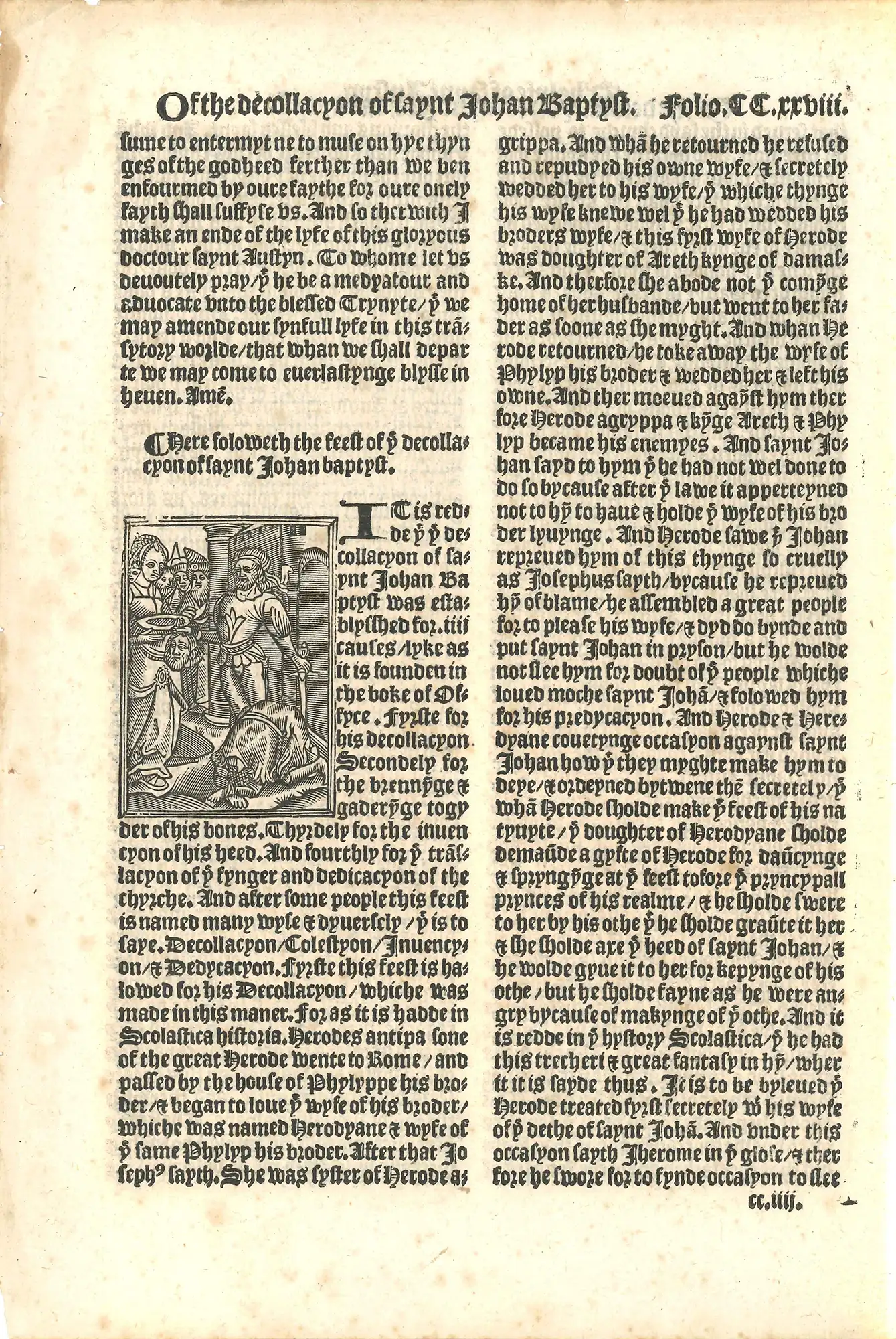Case 12
- England

Geoffrey Chaucer. The Canterbury tales. Westminster: William Caxton, ca. 1477. Single leaf. Part of The Parson’s Tale.
William Caxton (ca. 1422–1492) was the first English printer, learning the trade in Cologne where he co-published his first book De proprietatibus rerum by Bartholomaeus Anglicus printed by Johann Schilling ca. 1472. Caxton left Germany and settled in Bruges, where he translated and printed the first book in English, the Recuyell of the Histories of Troy (ca. 1473/4).
Caxton returned to England either during the close of 1475 or early in 1476 and set up the country’s first printing press in Westminster. There he produced the first printed edition of The Canterbury Tales (ca. 1477). He remained very active throughout the 1480s, and the last books to come from his press were published around 1491.
The single leaf held in the Reed Collection is from the Parson’s Tale, a treatise in prose on virtuous living and the last tale told.

Geoffrey Chaucer. The Canterbury tales. Westminster: William Caxton, ca. 1477. Single leaf. Part of The Parson’s Tale.
Open image in new window

Jacobus de Voragine. Legenda aurea. Westminster: William Caxton, ca. 1483. Single leaf. Text is from the Life of Saint Kenelm and Saint Margaret the Holy Martyr.
The first English printing of the Legenda aurea sanctorum was translated as The Golden Legend by its printer William Caxton. It also includes the first appearance of biblical passages in English at a time when religious authorities prevented the publication of Wycliffe’s English translation of the Bible from the Latin.
The text of this leaf is from the Life of Saint Kenelm and of Saint Margaret the Holy Martyr.

Jacobus de Voragine. Legenda aurea. Westminster: William Caxton, ca. 1483. Single leaf. Text is from the Life of Saint Kenelm and Saint Margaret the Holy Martyr.
Open image in new window

Jacobus de Voragine. Legenda aurea. London: Wynkyn de Worde, 1521. Single leaf. Text is from Of the decollacyon of saynt Johan Baptyst.
Wynkyn de Worde (d. 1534/5) was William Caxton’s successor. It is thought that he learnt the art of printing under Johannes Veldener in Cologne where he joined up with Caxton, travelling with him to Bruges and then to England. Within two years of Caxton’s death in 1492 de Worde printed five editions using his former master’s fonts, woodcuts and device.
In 1500/1 de Worde moved his business to London where he set up shop in Fleet Street. The shift to London was an important one, since the city was then becoming the centre of English printing. By moving his shop, de Worde was able to keep abreast of his competitors, some of whom, such as Julian Notary and Richard Pynson, formed partnerships with him. De Worde remained in London, until his death in 1534/5.
De Worde’s outputs were immense: by the year of his death, he had printed approximately 800 items, many of which was aimed at the grammar-school market. His best books owed everything to Caxton: two reissues of the Canterbury Tales and several editions of Caxton’s English translation of Legenda aurea.

Jacobus de Voragine. Legenda aurea. London: Wynkyn de Worde, 1521. Single leaf. Text is from Of the decollacyon of saynt Johan Baptyst.
Open image in new window


